The previous name of Takht Suleiman was Ganzak and Ganja, which was even mentioned in the texts of the Parthian dynasty. Ganzak or Ganja projects the same concept of treasure, a story that the locals believe that many treasures have been poured into Takht Sulaiman Lake so that the enemy cannot reach it. The name was also preserved during the Sassanid era when the region became the main base of the Zoroastrian government.
The treasure of Lake Takht Suleiman
Takht Suleiman Lake is almost oval, and its mesmerizing beauty is the creation of nature. The diameter of this lake from north to south is 120 meters, and the width of its east and west sides is about 80 meters. Because of its size,’ it is called the lake. The depth of the lake is 65 meters down. The beautiful azure lake of Takht Suleiman contains countless treasures; if anyone finds them, they will become rich. It is even said that the legend of Prophet Suleiman’s ring, which holds the secret to immortality, is in this lake, and for this reason, finding the treasure in Suleiman Lake has led gold seekers to death. Since 1377, swimming has been prohibited in this ancient area.
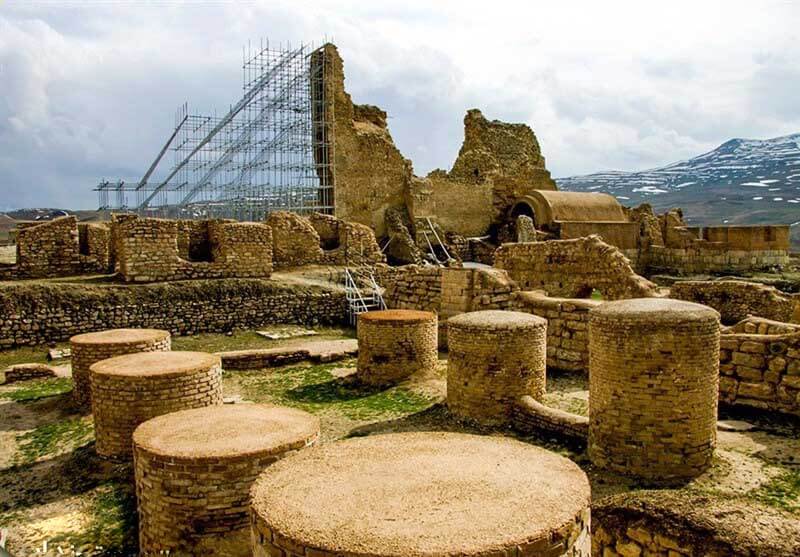
Takht Suleiman building
According to the Zoroastrian religion, the Sassanids built their fire temples and palaces as a reminder of the four respected elements that are highly respected in Zoroastrianism. One element is water, which the goddesses Anahid and Anahita have been the protector and guardian of the source of life. Hence the entrance to the fire temple and their palaces are created with a porch in front of a spring, like the Ardeshir Sassanid palace in Firozabad, Fars province, which was built in the same style. The soil element is very respected, and according to Zoroastrian teachings, the earth should never be polluted.
Fire temples are usually located on top of hills. Usually, four entrances are installed for fire temples, and a fire in large stone and metal hearths represents the four essential elements of life that they guarded.
Azargashnesb fire temple also has the same four elements. A cradle-shaped porch in the south of the area faces the lake, and today the foundations of the porch, made of stone and on a brick wall, are visible. The vast large porch leads to the fire temples.
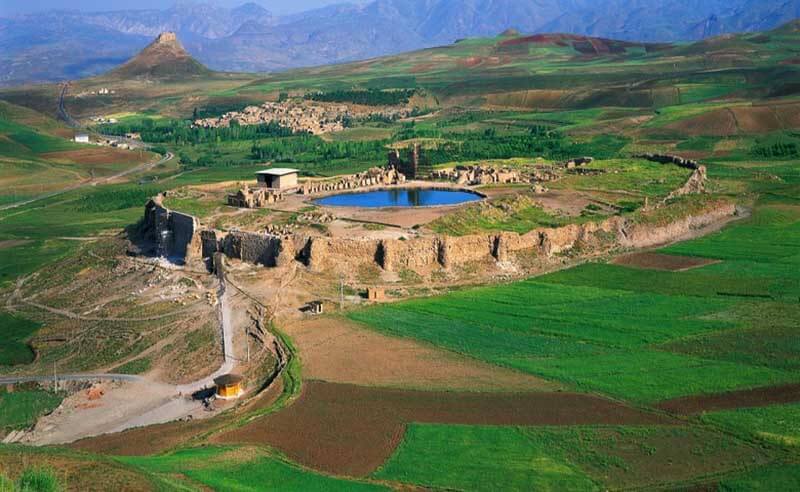
Takht Suleiman, a unique Sassanid building, was registered in the world as the fourth Iranian historical site in 1382 A.H. in a meeting held by the UNESCO organization by won the most votes to be the guardian of Iranian architecture and its old stories. Takht Suleiman has placed different historical eras with stories, literature and archaeology in the heart of clay, brick and stone and its buildings, which archaeology guide can explain a small part of the greatness of architecture, art and history.
To access this world heritage, you can go to Takht Suleiman from Tehran, Qazvin, Zanjan, Mian Doab, Bekan, Iranshah, and Takab, and there are other routes to Takht Suleiman from Tabriz and Bijar.
The best time to visit this vast historical site is the spring season, when the greens of the earth and purple chicory flowers, and small yellow wild flowers cover the entire area. And on the road, the beautiful and pristine nature mesmerizes every tourist so much that he forgets about the time. Usually, in the summer season, the cool weather of this region creates a pleasant season for the residents of warm climate areas in Iran and makes it possible for them to enjoy this ancient site.

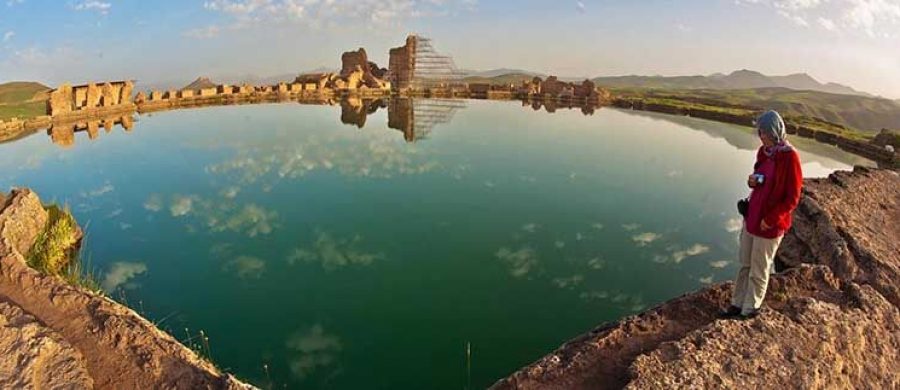




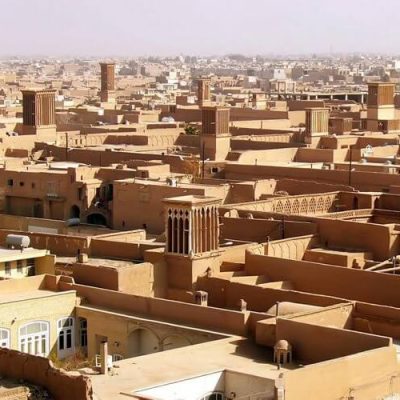

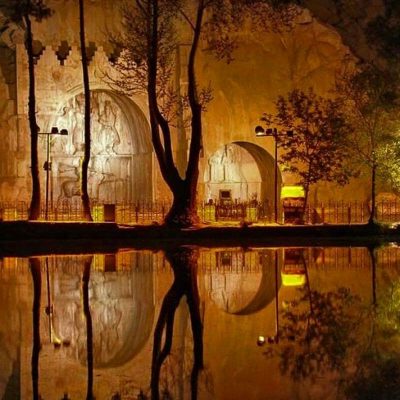
Post Discussion